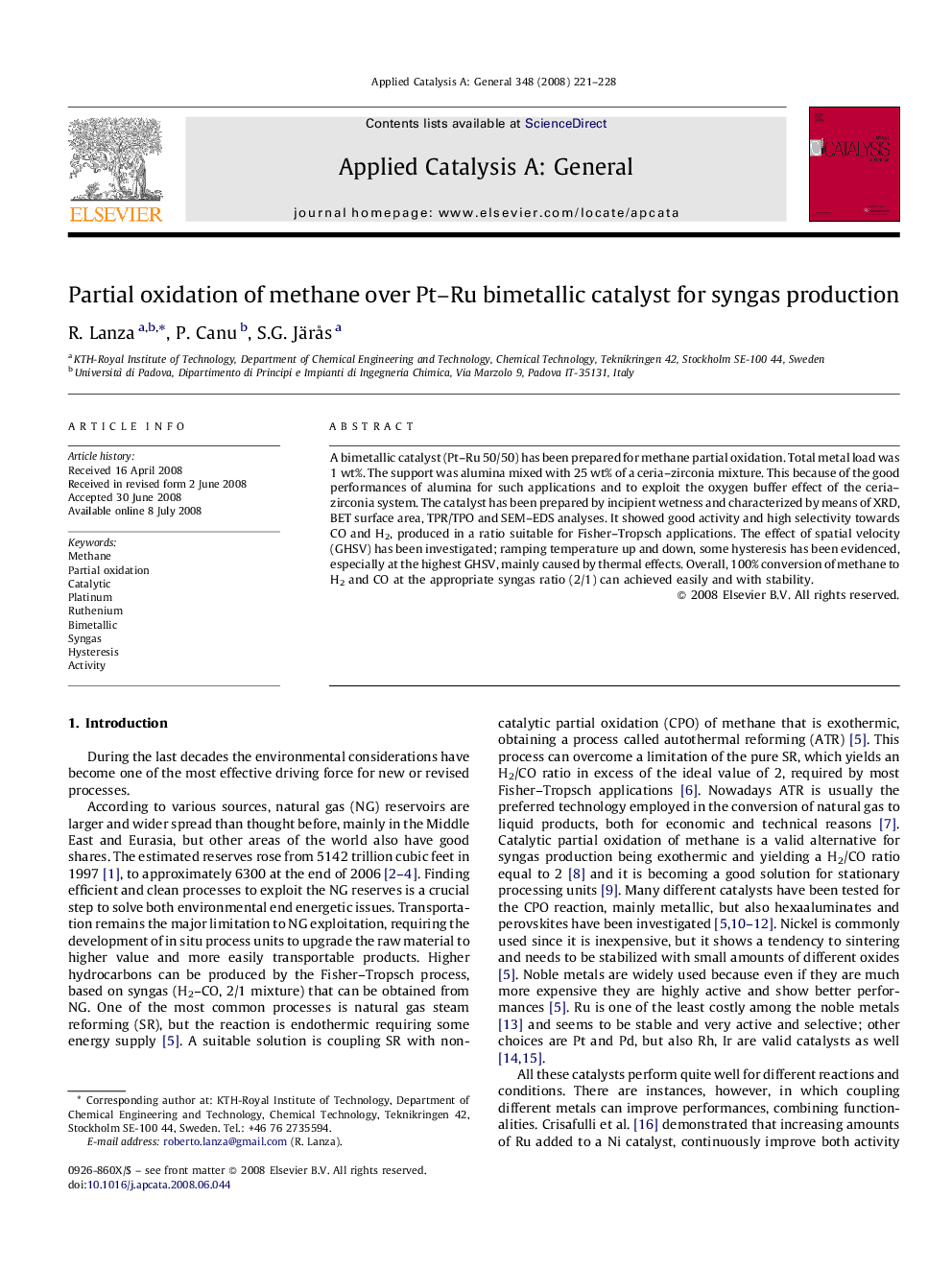| کد مقاله | کد نشریه | سال انتشار | مقاله انگلیسی | نسخه تمام متن |
|---|---|---|---|---|
| 43488 | 45972 | 2008 | 8 صفحه PDF | دانلود رایگان |

A bimetallic catalyst (Pt–Ru 50/50) has been prepared for methane partial oxidation. Total metal load was 1 wt%. The support was alumina mixed with 25 wt% of a ceria–zirconia mixture. This because of the good performances of alumina for such applications and to exploit the oxygen buffer effect of the ceria–zirconia system. The catalyst has been prepared by incipient wetness and characterized by means of XRD, BET surface area, TPR/TPO and SEM–EDS analyses. It showed good activity and high selectivity towards CO and H2, produced in a ratio suitable for Fisher–Tropsch applications. The effect of spatial velocity (GHSV) has been investigated; ramping temperature up and down, some hysteresis has been evidenced, especially at the highest GHSV, mainly caused by thermal effects. Overall, 100% conversion of methane to H2 and CO at the appropriate syngas ratio (2/1) can achieved easily and with stability.
A bimetallic catalyst (Pt–Ru 50/50) has been prepared for methane partial oxidation. Total metal load was 1 wt%. The support was alumina mixed with 25 wt% of a ceria–zircona mixture. This because of the good performances of alumina for such applications and to exploit the oxygen buffer effect of the ceria–zirconia system. The catalyst has been prepared by incipient wetness and characterized by means of XRD, BET surface area, TPR/TPO and SEM–EDS analyses. It showed good activity and high selectivity towards CO and H2, produced in a ratio suitable for Fisher–Tropsch applications. The effect of spatial velocity (GHSV) has been investigated; ramping temperature up and down, some hystersis has been evidenced, especially at the highest GHSV, mainly caused by thermal effects. Overall, 100% conversion of methane to H2 and CO in the appropriate syngas ratio (2/1) can be easily and stably achieved.Figure optionsDownload as PowerPoint slide
Journal: Applied Catalysis A: General - Volume 348, Issue 2, 15 October 2008, Pages 221–228